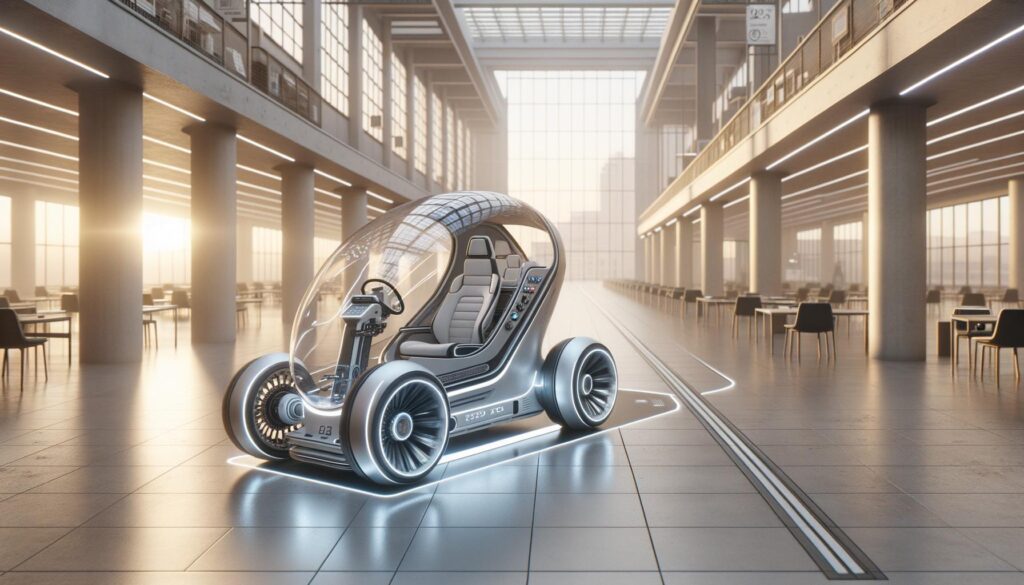The Future of Disability Vehicles in 2025

Technological Innovations on the Horizon
The world of mobility is on the brink of a revolution, with disability vehicles at the forefront of this transformation. As we approach 2025, technological innovations are set to redefine how we perceive and utilize these vehicles. Autonomous driving technology is notably making waves, offering a level of independence previously deemed impossible. This innovation allows individuals with disabilities to experience newfound freedom, driving without human assistance. By leveraging advanced sensors, cameras, and artificial intelligence, vehicles can navigate complex environments safely and efficiently.
Another groundbreaking advancement is the integration of smart technology. Through sophisticated software applications, users can customize their driving experience like never before. Customizable voice commands and smartphone applications will enable convenient access and control over various vehicle functions, from navigation to entertainment systems. Additionally, the use of lightweight materials and improved battery technology will enhance range and efficiency, making these vehicles more practical for everyday use.
Enhanced Accessibility Features
Accessibility remains a crucial focus for disability vehicles, and 2025 is not an exception. Designers and engineers are putting significant effort into creating vehicles that cater to a diverse range of needs. Innovations are being made in user-centric design, focusing on comfort and ease of use. Here are some of the noteworthy features expected to be standard by 2025:
- Electric ramps and lifts, facilitating easy entry and exit
- Adjustable seats with memory settings for personalized comfort
- Advanced safety features, including automatic braking and collision avoidance
Moreover, the integration of IoT (Internet of Things) technology will enable real-time reporting on vehicle performance and maintenance needs, reducing the likelihood of breakdowns and ensuring smoother journeys.
Sustainable and Eco-Friendly Designs
In recent years, there has been a global push toward sustainability, and disability vehicles in 2025 are expected to align with this trend. Manufacturers are focusing on developing electric vehicles (EVs) that reduce carbon footprints while providing optimal performance. The adoption of renewable energy sources, such as solar panels, to power these vehicles is gaining traction.
By incorporating recyclable materials and sustainable manufacturing practices, these vehicles will meet the growing demand for eco-friendly products. The combination of long-lasting batteries and energy-efficient systems will not only benefit the environment but also reduce overall costs for users, making disability vehicles more accessible to a broader audience.
Community and Policy Support
A significant factor in the development and success of disability vehicles is community and policy support. Various governments and organizations are actively encouraging the growth of this sector through incentives and subsidies. By 2025, it is expected that policy frameworks will provide:
- Tax benefits and incentives for purchasing innovative disability vehicles
- Grants to support research and development in this field
- Infrastructure improvements, such as dedicated parking and charging stations
These initiatives aim to ease financial burdens on buyers while promoting wider adoption of modern disability vehicles. Enhanced collaboration between public and private sectors will play a pivotal role in advancing accessibility and mobility for everyone.
The Impact on Individuals with Disabilities
The upcoming enhancements in disability vehicles promise profound changes for individuals with disabilities. Improved mobility and greater independence will enable users to lead more fulfilling lives, participating more actively in social, professional, and educational opportunities. This will contribute to a more inclusive society where people with disabilities can enjoy similar freedoms as those without.
Moreover, these vehicles will help users overcome day-to-day challenges that come with limited mobility, increasing their quality of life. As technology continues to evolve, disability vehicles will undoubtedly become a staple in personal transportation, empowering individuals and reshaping the narrative around disability and mobility.
Conclusion: A Promising Horizon
The advancements we anticipate in disability vehicles by 2025 signal a promising future filled with opportunities for independence and environmental sustainability. For individuals with disabilities, these vehicles represent more than just transportation; they embody freedom, empowerment, and dignity. As technology progresses, so too does our ability to create a world that is more inclusive and accessible for all, setting the stage for even more remarkable developments in the years to come.
